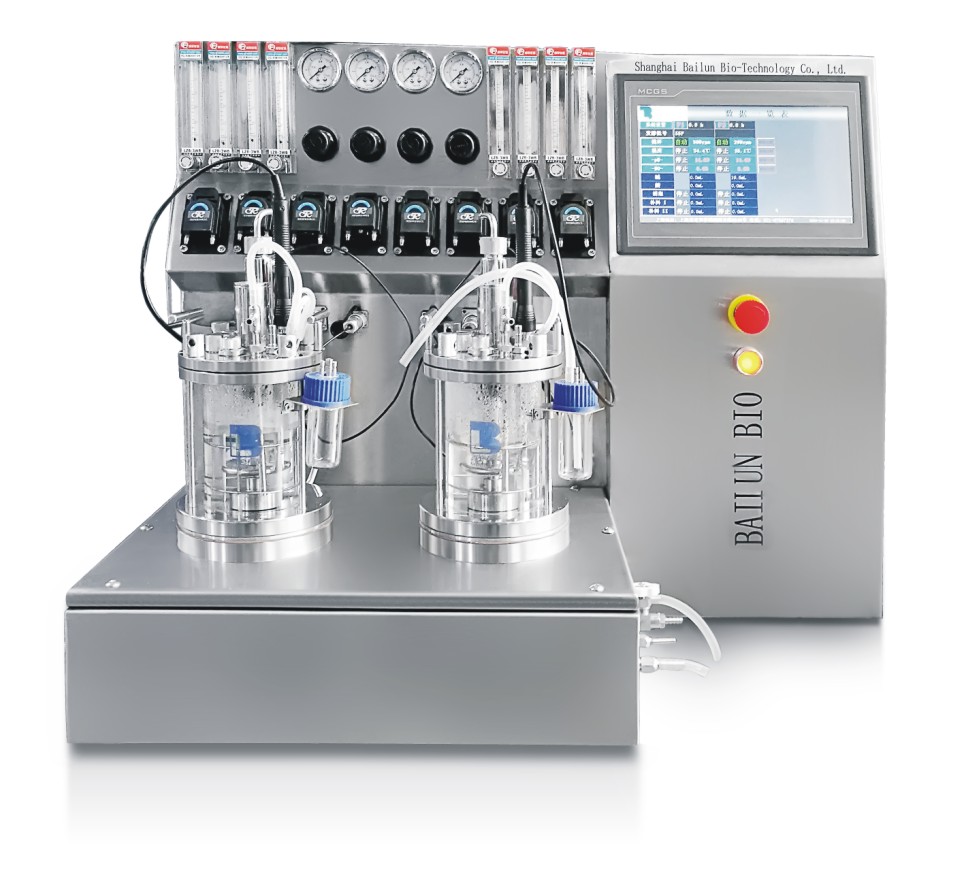
One of the most important technological advancements in the field of industrial microbiology and biotechnology is the invention of bioreactors. Why? They have enabled us to create important medical products like vaccines, hormones, and enzymes, some of which treat serious chronic conditions. These solid and profound systems are the foundation for progress in the field of medicine.
Knowledge about bioreactors is, therefore, essential to contemporary science and technology, irrespective of the choice of an individual profession.
This article discusses the various categories of bioreactors, how they operate, and the industries that benefit from their use. After reading through this article, you will understand what a bioreactor is and why it is such a significant instrument in future scientific and technological advances.
So what is a bioreactor and how does it function?
What’s a Bioreactor?
A bioreactor is a medical device designed to host living microorganisms and to provide conducive environments for these microorganisms to thrive. Essentially, bioreactors mimic real-life environmental conditions of these microorganisms with the intention of producing certain organic compounds as desired. Without a bioreactor, these microorganisms would not survive, hence its significance cannot be understated especially in the field of medicine.
So how does it achieve this? It is a closed-loop system in the sense that external factors are not allowed to influence the environments inside a bioreactor. Therefore, the nutrients, pH, temperature, dissolved oxygen concentration, and other nutritional content of the bioreactor must be regulated and constantly adjusted to mimic actual environments of these microorganisms’ natural habitat.
But why are bioreactors necessary? Because they make it possible to produce important medical compounds that otherwise would never be achieved. These include vaccines, growth hormones, and even hyaluronic acid, which is especially important when it comes to beauty enhancements and improving the skin’s suppleness.
5 Key Functions of Bioreactors
The foremost role of a bioreactor is to provide optimal conditions for biological organisms to bloom, reproduce, or synthesize essential items. To do this, it is crucial to fully understand the components of a bioreactor and how they work.
1. Controlled Environmental Conditions
Bioreactors are designed to host living organisms in a controlled environment to grow and develop in full storage. Without bioreactors, these microorganisms would not survive outside their environments, and we would therefore never be able to produce important medical compounds.
Air temperature, pH, dissolved oxygen, carbon dioxide concentration, nitrates, phosphates, ammonia, and potassium must be monitored and, in most cases, controlled to ensure optimum development conditions.
These parameters are regulated by real-time biosensors, which ensure that organisms remain in their correct functional state and make the right products. Managing these qualities is an essential factor in decision-making across business enterprises, especially in the medical, biofuel, and food processing industries.
2. Agitation and Mixing
Bioreactors use mixing and agitation processes to assist cells absorb nutrients and gas, such as oxygen, within the bioreactor. Without this feature, the organisms would probably take long to absorb the necessary nutrients, or in the worst case scenario, die out of lack of nutrients or insufficient gaseous exchange.
While airlift bioreactors culturally mix by generating gas bubbles, stirred-tank bioreactors use mechanical impellers. Stirring is carried out continuously so that cell division and product formation occur throughout the system.
3. Sterility
Sterility plays a major role in avoiding undesirable microorganism infection in bioreactors, which has the potential to destroy entire batches of biological products. Sterilization should be performed prior to each use of a bioreactor, which is why they are meticulously engineered to ensure sterility.
This keeps the process’s integrity and the end product’s quality intact by guaranteeing that only the desired organisms flourish within. Contamination prevention is essential, particularly in sectors where purity and uniformity are vital, such as the pharmaceutical industry.
4. Gas Exchange
Microorganisms require adequate gaseous exchange in order to thrive. They need to be able to have access to oxygen and be able to excrete carbon dioxide easily. Bioreactors assist with this by improving the distribution of oxygen and removal of carbon dioxide. Why is this important?
Without this ability, the carbon dioxide inside the bioreactor would accumulate and lower the tank’s PH, making it acidic. This would in turn affect the proliferation of cells and reduce their efficiency.
For this reason, bioreactors come with two important features. Spargers and membranes. Spargers help in adding tiny oxygen bubbles to the culture while membranes allow for regulated oxygen delivery and carbon dioxide removal.
This gaseous exchange system supports high yields and efficient production by ensuring organisms obtain the oxygen required to function at their optimal level while excreting hazardous gasses.
5. Monitoring and Feedback
It is not enough to just have a bioreactor and just let it do its functions. You have to constantly monitor it and check for various parameters such as oxygen level, PH, temperature, nutrient concentration. As such, bioreactors are fitted with bio sensors that collect data on these vital indicators.
Every culture will have its own optimal parameters that must be constantly checked and reviewed. Often, these sensors are designed to gather this information automatically and adjust accordingly to create the best possible environment for cell growth and productivity. This feedback mechanism ensures that the bioreactor is working efficiently even in the absence of a human to constantly adjust the environment.
5 Main Types of Bioreactors
Bioreactors are not all made equal. There are 5 different kinds of bioreactors depending on their applications. Each one is tailored for a particular process type. The design and build quality of each bioreactor depends entirely on the types of cultivated organisms and the intended results.
Let us examine the most prevalent varieties of bioreactors.
1. Glass Bioreactor
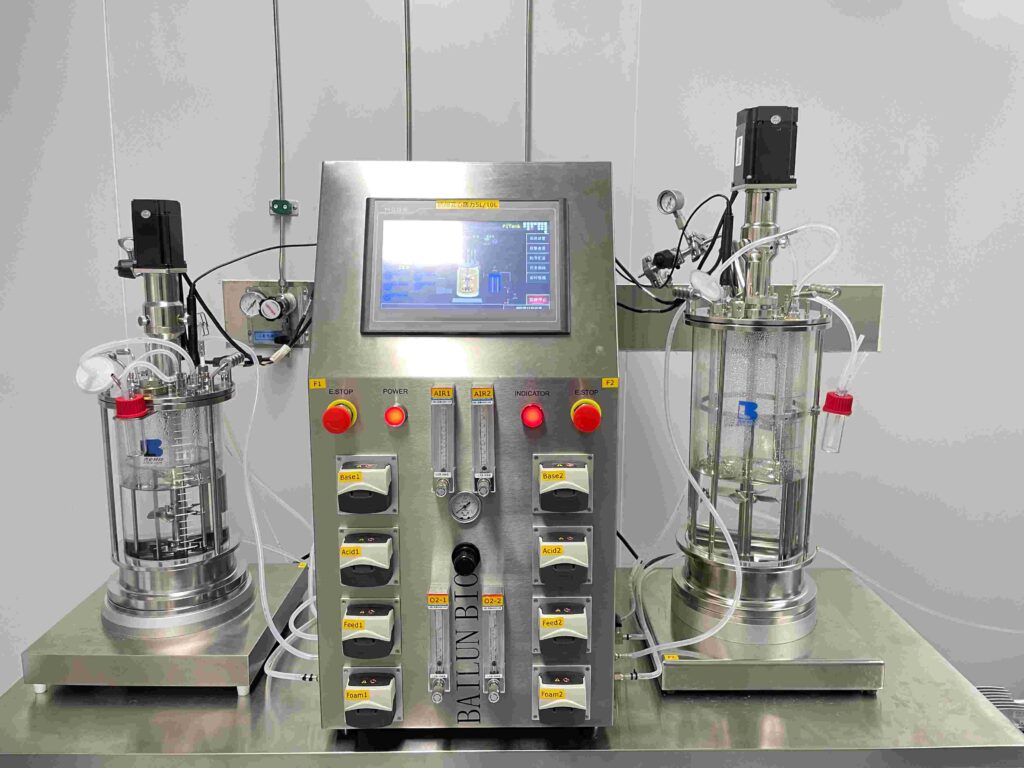
Glass bioreactors are widely used in laboratories for research, small-scale production, and testing.
Advantages:
- Visibility: Observing the internal biological processes is simple, thanks to the transparent material.
- Versatility: Adaptable to varied processes and available in multiple configurations such as mechanical driving or magnetic stirring.
- Sterility: Many models permit in-situ sterilization to prevent contamination.
Disadvantages:
- Scale: Not appropriate for large-scale industrial production; limited to small-scale enterprises.
- Fragility: Compared to materials like stainless steel, glass is more brittle.
2. Stainless Steel Bioreactors
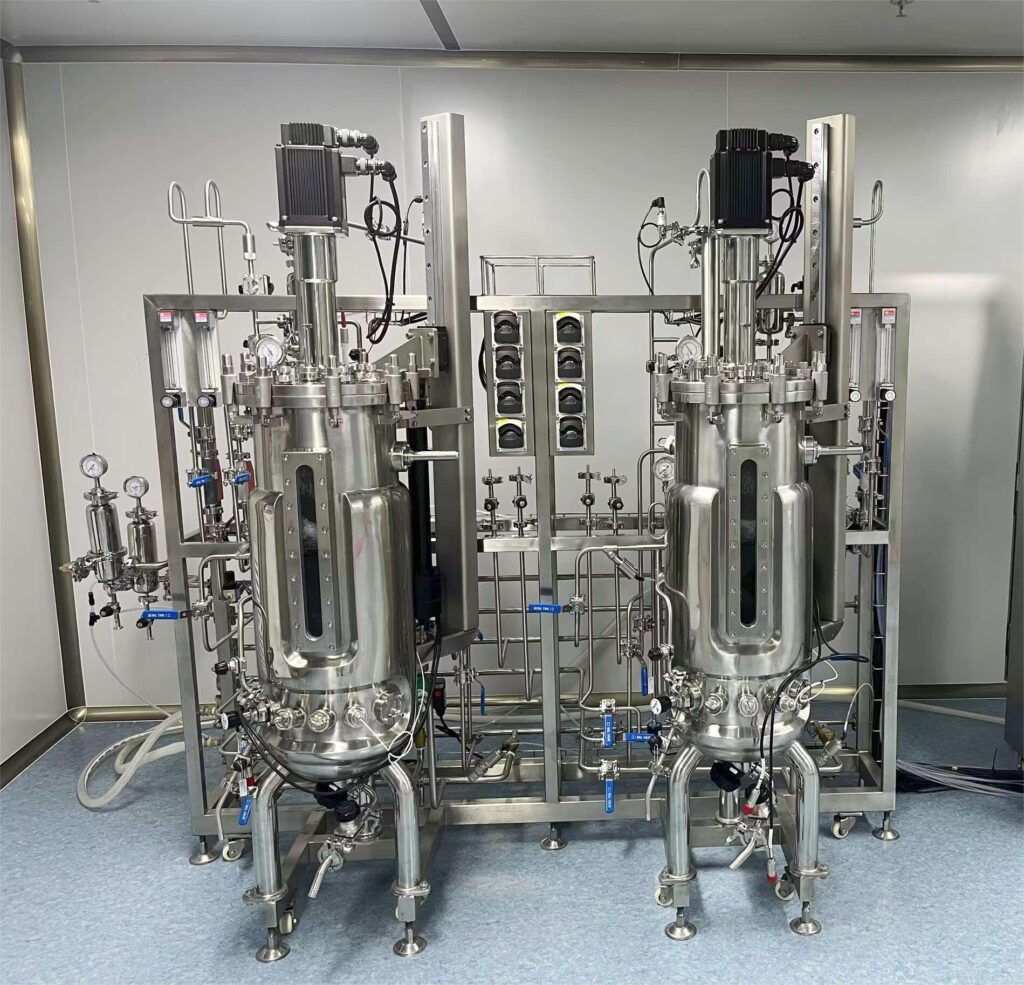
Because of their robustness and capacity to tolerate high pressures, stainless steel bioreactors are frequently used in large-scale industrial production.
Advantages:
- Durability: Bioreactors made of stainless steel are strong enough to withstand long-term use and high-pressure procedures.
- Scalability: suited for large-scale manufacturing; frequently applied to fermentation and pharmaceuticals.
- Cleanability: Keeping sterility in industrial environments requires easy cleaning and sanitizing of stainless steel.
Disadvantages:
- Cost: Compared to smaller or single-use bioreactors, it is more expensive to construct and install.
- Complex maintenance: This may take longer to complete because it calls for more stringent cleaning and validation procedures.
3. Stirred-Tank Bioreactors (STR)
They are the most well-known, and many people prefer them. They have a cylindrical jar with an impeller, or churning device, in the middle. The liquid within is constantly agitated by the impeller, which guarantees that the organisms, gasses, and nutrients are evenly distributed.
Advantages:
- Perfect for industrial production.
- Outstanding mixing of nutrients and transport of oxygen.
- Easily scalable from small-scale research projects to massive manufacturing operations.
Disadvantages:
- Shear stress can be produced by mechanical agitation for delicate organisms, such as mammalian cells.
- High energy use as a result of the mechanical stirring mechanism.
4. Airlifted Bioreactors
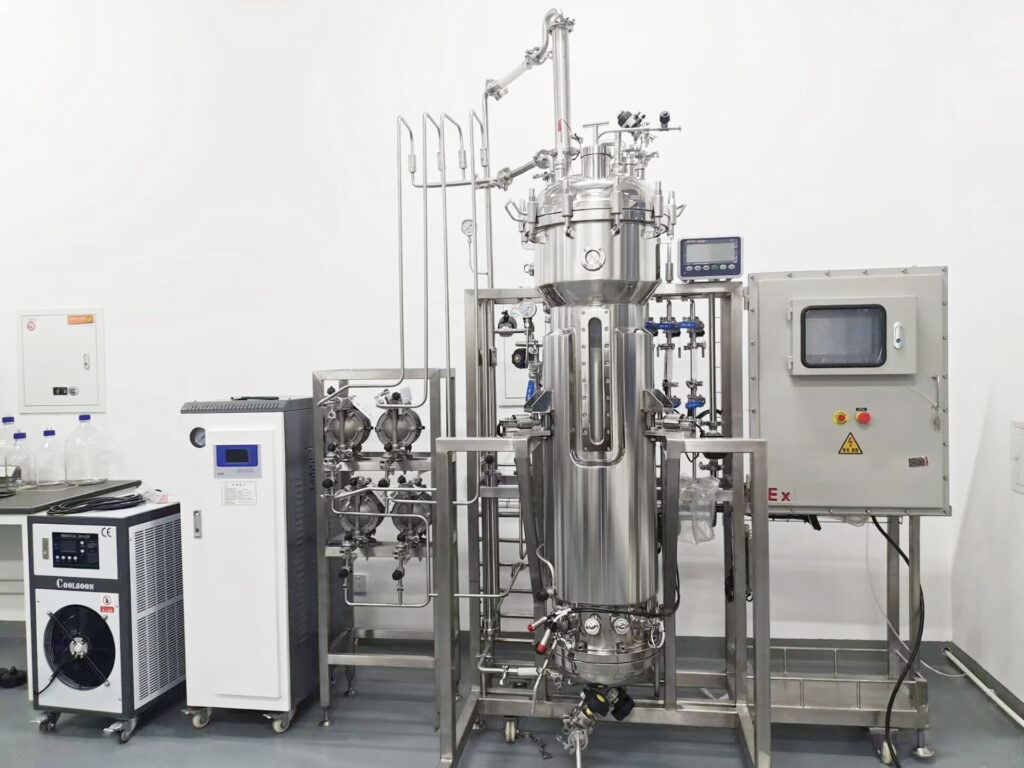
In lieu of mechanical agitation, airlift bioreactors mix using air or gas bubbles. A circulation loop is created in the liquid medium by introducing gas at the reactor’s bottom. The contents mix due to the velocity of the bubbles, which releases oxygen and encourages cell growth.
Advantages:
- Reduced shear stress, which is suitable for sensitive cells.
- Compared to mechanically stirred systems, it is more energy-efficient.
Disadvantages:
- Reduced mixing efficiency in contrast to bioreactors with stirred tanks.
- It is more challenging to scale up for use in manufacturing.
Airlift bioreactors have a frequent role in operations involving sensitive organisms, as well as for the cultivation of plant and animal cells.
5. Membrane Bioreactors
A semipermeable membrane is used in membrane bioreactors to keep the biological cells and the products they generate apart. This configuration proves to be particularly advantageous in procedures that necessitate ongoing separation, such as wastewater treatment, where the biomass is held in reserve as clean water flows over the membrane.
Advantages:
- Cell separation from the product that works well.
- Exceptional output and effectiveness in ongoing operations.
Disadvantages:
- It’s necessary to clean or replace membranes on a regular basis when they get fouled.
- It is more costly to run than bioreactor designs with simpler architectures.
5 Applications of Bioreactors
Now that we’ve looked at what is a bioreactor and how it functions, it’s time to go through its wide range of applications. Bioreactors are at the core of several industries undergoing radical change, from improving sustainable energy solutions to altering the production of pharmaceuticals.
Bioreactors have significantly impacted the future by producing medicines that can save lives, using bioenergy, and advancing ecologically responsible waste management.
1. Pharmaceuticals and Vaccine Production
One of the biggest markets for bioreactors is the pharmaceutical sector. Gene-modified cells cultivated in bioreactors are used in the production of many life-saving medications, including insulin, monoclonal antibodies, and vaccinations.
To cultivate the required cells on a large scale, for instance, bioreactor technology was very crucial to the development and mass production of COVID-19 vaccines. Cultures of microorganisms or genetically modified mammalian cells that yield particular proteins, enzymes, or other medicinal chemicals can be grown in bioreactors.
Complex biological medications that would typically be impossible to produce on a big scale using conventional chemical procedures now have the possibility of being produced because of this.
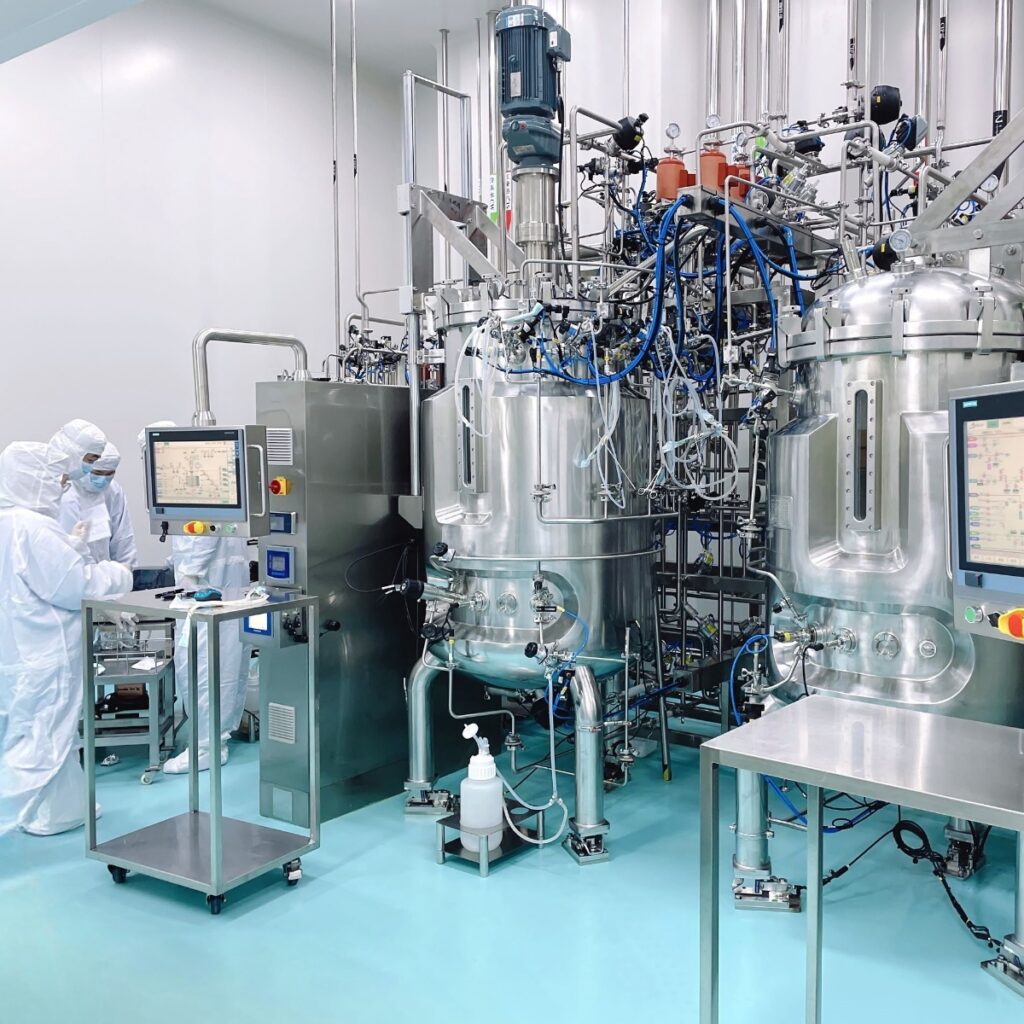
2. Biofuels
As the world moves toward more sustainable energy sources, bioreactors are becoming increasingly important in the production of biofuels. Microorganisms such as algae, yeast, or bacteria can be grown in bioreactors, where they convert organic material into biofuels like ethanol, biodiesel, or even hydrogen.
Biofuels produced in bioreactors offer a renewable alternative to fossil fuels and can significantly reduce greenhouse gas emissions. Algae, for example, can be cultivated in photobioreactors, where they photosynthesize and produce lipids, which can then be converted into biodiesel. These processes are seen as critical to the transition to a cleaner energy in future.
3. Food and Beverages
Industrial fermentation, the process by which microorganisms break down sugars to generate goods like beer, wine, yogurt, and bread, has long been a food and beverage industry’s staple. This age-old method has been elevated by bioreactors, which provide exact control over fermentation conditions for consistently high-quality and flavor results.
For example, these fermentation bioreactors, sometimes called industrial fermenters, are used in the brewing industry to efficiently convert sugars into alcohol by cultivating yeast in an ideal environment. Bioreactors in dairy production allow milk to ferment on a massive scale to make fermented products like cheese and yogurt.
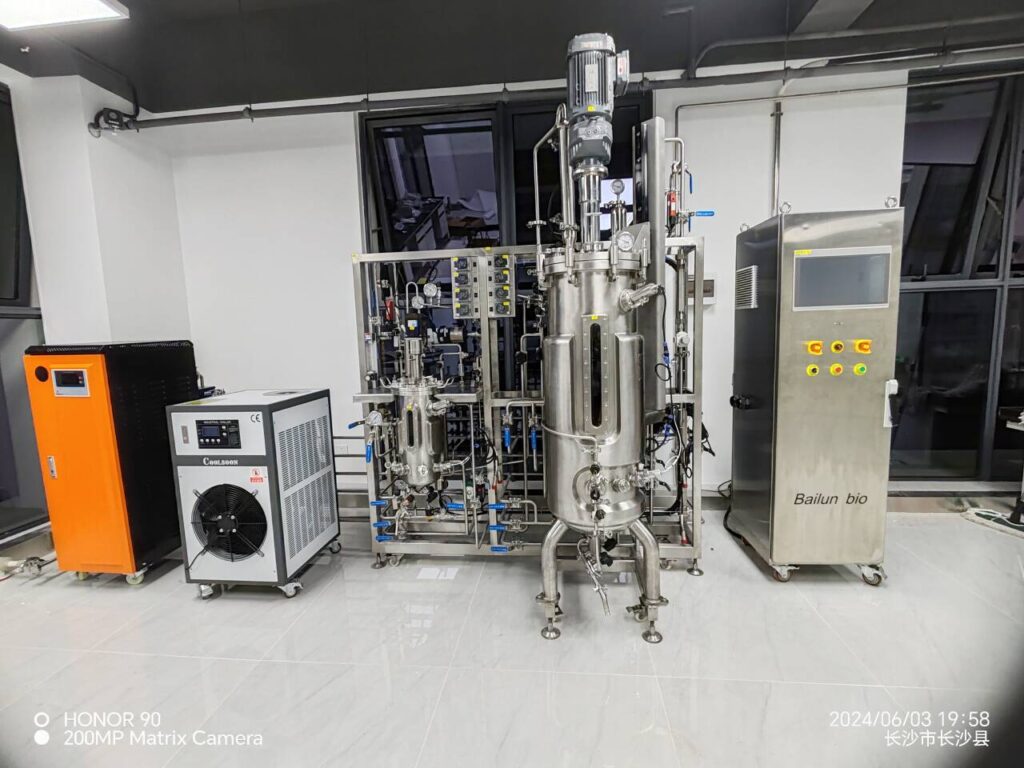
4. Wastewater Treatment
Environmental engineering requires bioreactors especially for cleaning up wastewater. For instance, membrane bioreactors are used to clean industrial and sewage waste by cultivating bacteria that decompose organic waste. Water treated like this is safe to reuse or discharge into the environment.
This is achieved when microorganisms in these systems break down the organic compounds in the wastewater and produce safe byproducts. This method reduces dangerous chemicals and energy-intensive treatments in an effective and environmentally responsible manner.
5. Tissue Engineering and Regenerative Medicine
Bioreactors are used in tissue engineering to cultivate cells on scaffolds to create tissues or whole organs. These bioreactors offer a regulated setting similar to what is found in the human body, enabling cells to proliferate and transform into valuable tissues.
With the help of this technology, damaged tissues or organs may one day be replaced with lab-grown substitutes in the field of regenerative medicine. Bioreactors, for instance, have been used to generate liver tissue, cartilage, and heart valves, giving hope to patients who require organ transplants but are on long waiting lists.
Utilize technologies designed to satisfy the needs of contemporary biotechnology to improve your operations. Upgrade now and see the impact of state-of-the-art innovation by partnering with Bailun Biotechnology.
Contact us now to find the ideal bioreactor solution tailored to your specific needs!

